14 Types of Antique Mirrors That Add Timeless Elegance
Antique mirrors bring a sense of history and quiet charm to any room. Their hand-carved frames, soft patina, and unique designs tell stories from centuries past. From gilded Rococo pieces to elegant Art Deco styles, each mirror reflects a different era of beauty. Adding one to your home is an easy way to create warmth and timeless character.
This post may contain affiliate links, which helps keep this content free. Please read our disclosure for more info.
Venetian Mirrors

Venetian mirrors are famous for their luminous glasswork and graceful etched patterns. Originating in Italy during the Renaissance, these mirrors often feature delicate floral or scroll designs along the edges. The artistry of hand-cut glass panels joined by small rosettes gives each piece a unique sparkle. Their light-reflecting quality makes them perfect for brightening a dark hallway or dressing area.
Beyond their reflective beauty, Venetian mirrors bring a sense of refinement to any interior. They complement both antique and modern furnishings, adding a soft, romantic touch. Many collectors prize them for their craftsmanship and elegant detail. When placed near natural light, their mirrored surfaces create an almost watercolor effect across the room.
Gilded Rococo Mirrors

Gilded Rococo mirrors emerged in 18th-century France, a time when ornate design defined luxury. Their asymmetrical frames, decorated with gold leaf, often feature scrolls, shells, and floral flourishes. These mirrors were made to impress and were typically found in palaces and grand salons. Today, they serve as striking statement pieces that draw the eye instantly.
The charm of a Rococo mirror lies in its rich gold tone and intricate carving. It can transform a simple fireplace mantel or entryway into a showpiece. Pairing one with soft lighting allows the gilt surface to glow warmly. Their romantic shapes bring a sense of grandeur to even the smallest space.
Federal Convex Mirrors

Federal convex mirrors became popular in early 19th-century America. The rounded glass creates a panoramic reflection, adding depth and light to a room. Many examples include carved wooden frames featuring eagles, stars, or laurel leaves as patriotic symbols. Their design balances elegance with a sense of history.
Collectors love these mirrors for their distinct shape and visual drama. They work well above a console table or in a dining room where candlelight can play across the curved glass. The convex reflection adds movement to the scene, making the space feel larger. Their distinctive American heritage gives them a special place in traditional homes.
Baroque Mirrors
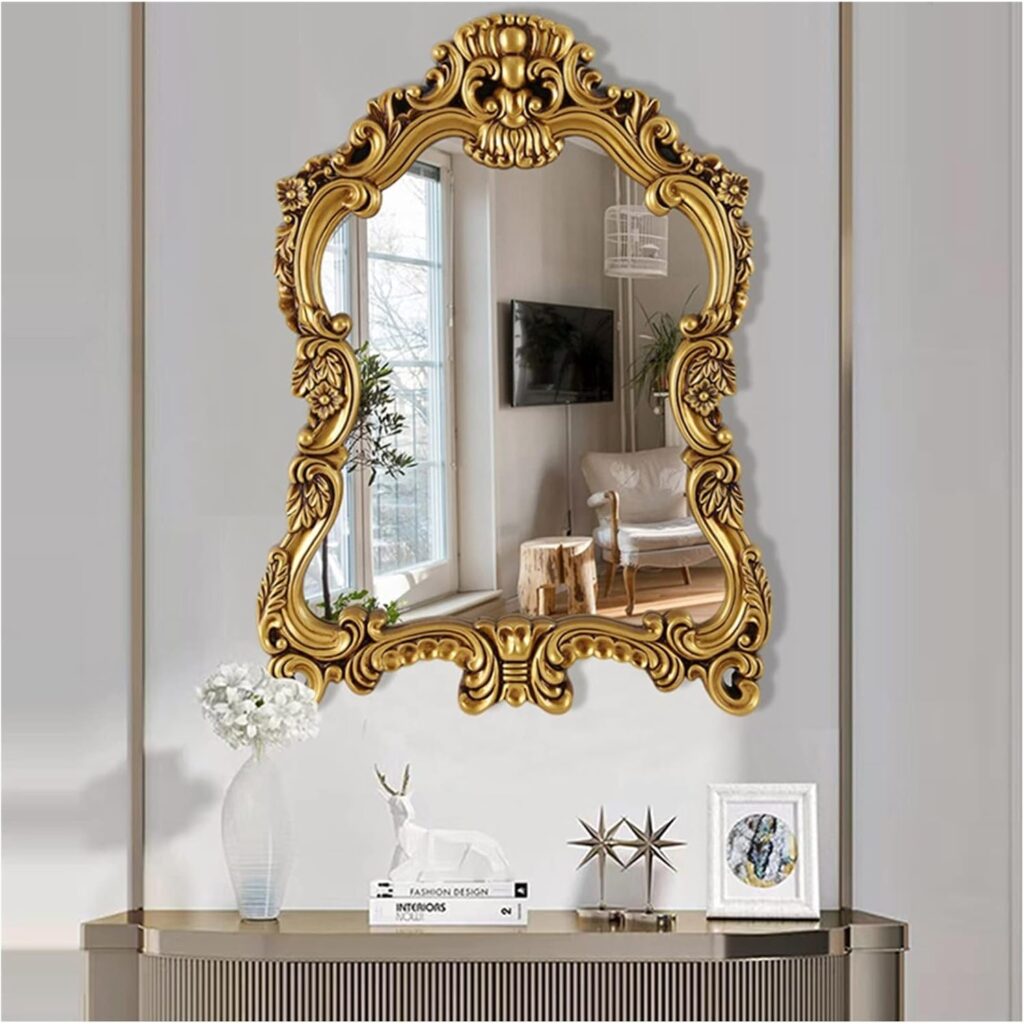
Baroque mirrors express grandeur and drama through deeply carved wooden frames. Their design often includes cherubs, garlands, and scrollwork, creating a feeling of abundance and luxury. These mirrors were favored by royalty and noble families throughout Europe. Their bold presence still makes them centerpieces in elegant interiors.
When displayed in a living room or entryway, a Baroque mirror instantly commands attention. Its heavy frame contrasts beautifully with simple wall colors or modern furnishings. Many pieces have a timeworn patina that adds warmth and texture. Owning one feels like holding a fragment of European history.
Georgian Mirrors
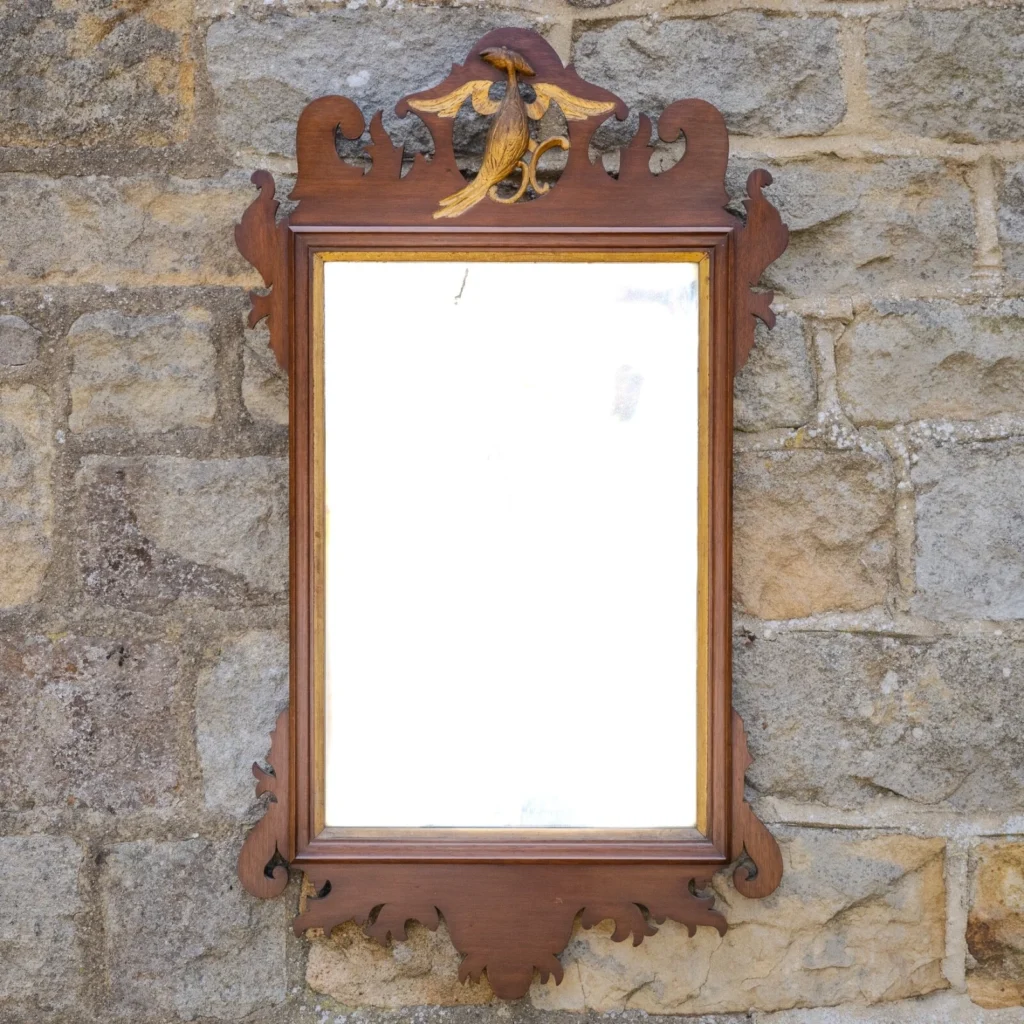
Georgian mirrors are known for symmetry and refined beauty. Their gilt or mahogany frames often feature urns, ribbons, or neoclassical motifs. The restrained design of the Georgian era emphasized proportion and balance. These mirrors were meant to add grace without overwhelming the space.
Their elegance works beautifully in rooms with traditional décor or subtle color palettes. Over a mantel or console, a Georgian mirror adds soft sophistication. Many pieces have aged gilding that gives them gentle character. They pair easily with candlelight and antique furniture, creating a calm and timeless atmosphere.
Regency Girandole Mirrors
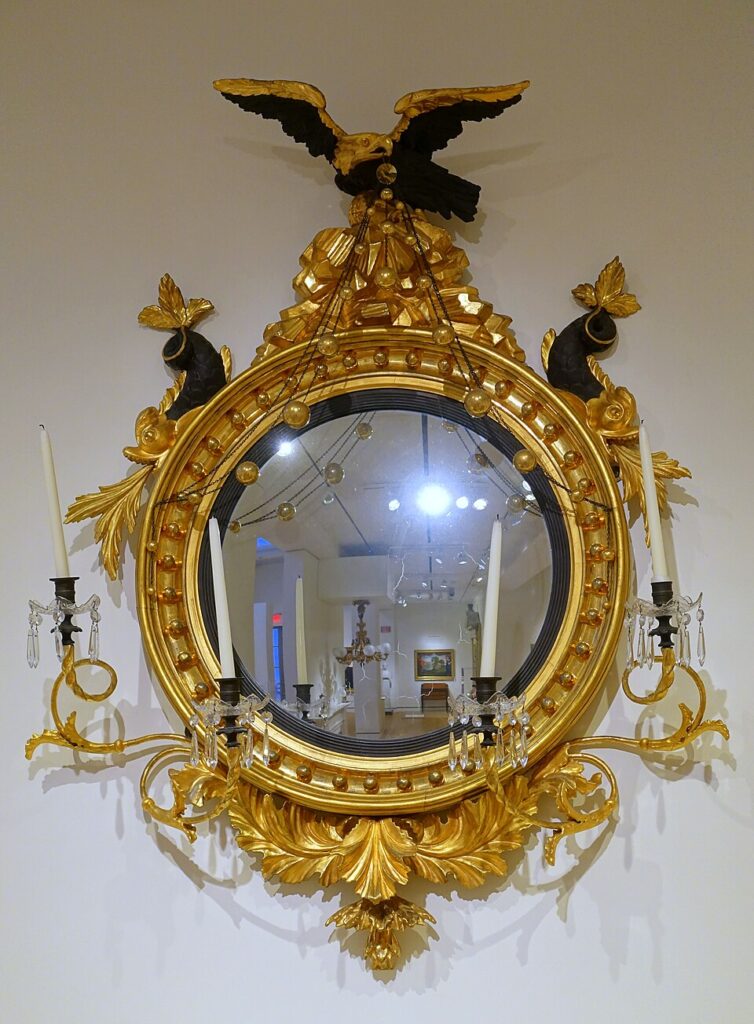
Regency girandole mirrors combine reflection and candlelight in one graceful form. They typically have gilded circular frames with attached sconces, blending art and function. The candlelight flickers against the glass, casting a warm glow across the wall. These mirrors were a popular feature in early 19th-century English homes.
Adding a girandole mirror brings instant charm to hallways or dining rooms. Their gleaming gold surfaces complement crystal chandeliers and polished wood. They serve as both decoration and mood lighting. When lit, the reflection doubles the soft glow, creating a romantic ambiance.
Trumeau Mirrors
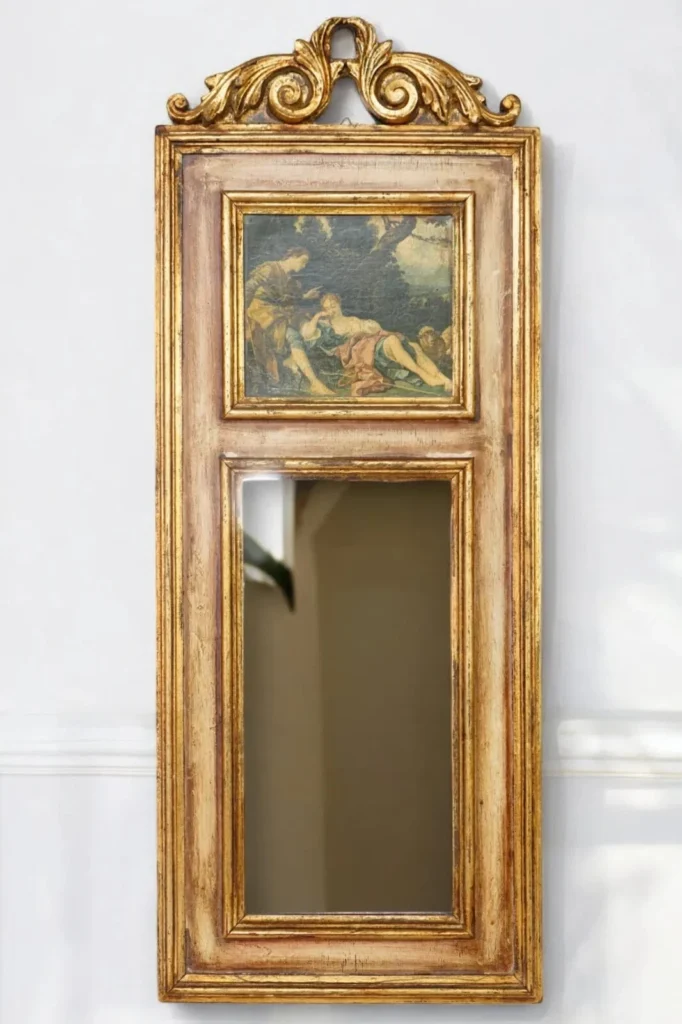
Trumeau mirrors originated in France and were often built into wall panels above fireplaces. Each piece combines a rectangular mirror with a painted or carved panel at the top. The artwork might depict pastoral scenes, cherubs, or floral arrangements. Their dual design gives them both artistic and functional appeal.
Trumeau mirrors bring elegance and texture to any traditional interior. They work especially well in living rooms or entryways with tall ceilings. The decorative panel above the glass draws the eye upward, adding height and interest. With their blend of art and reflection, these mirrors bridge the gap between furniture and fine art.
Art Nouveau Mirrors
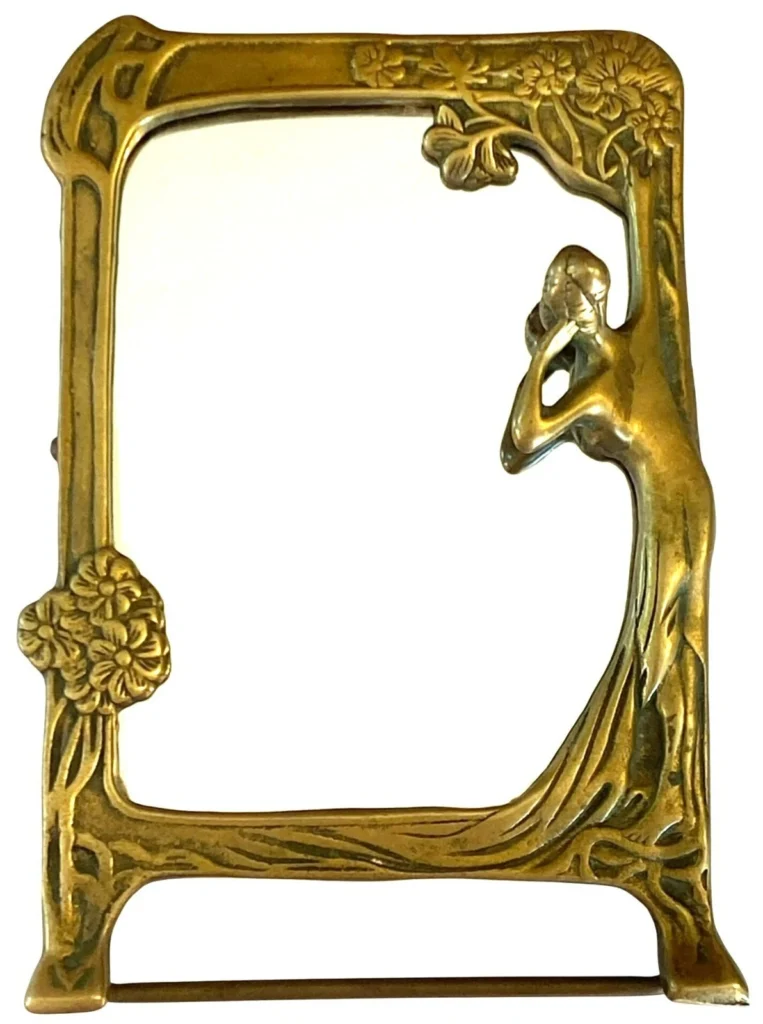
Art Nouveau mirrors celebrate the natural world with flowing lines and floral motifs. Their sinuous frames often resemble vines or blossoms, emphasizing organic movement. Many feature hand-painted details or stained glass accents. These mirrors capture the graceful mood of the early 1900s.
They work beautifully in bedrooms or dressing rooms where soft curves and gentle color feel inviting. The delicate design complements wood and brass furnishings. Each mirror feels like a piece of art, adding subtle romance to modern décor. Their natural motifs make them timeless favorites among collectors.
Art Deco Mirrors
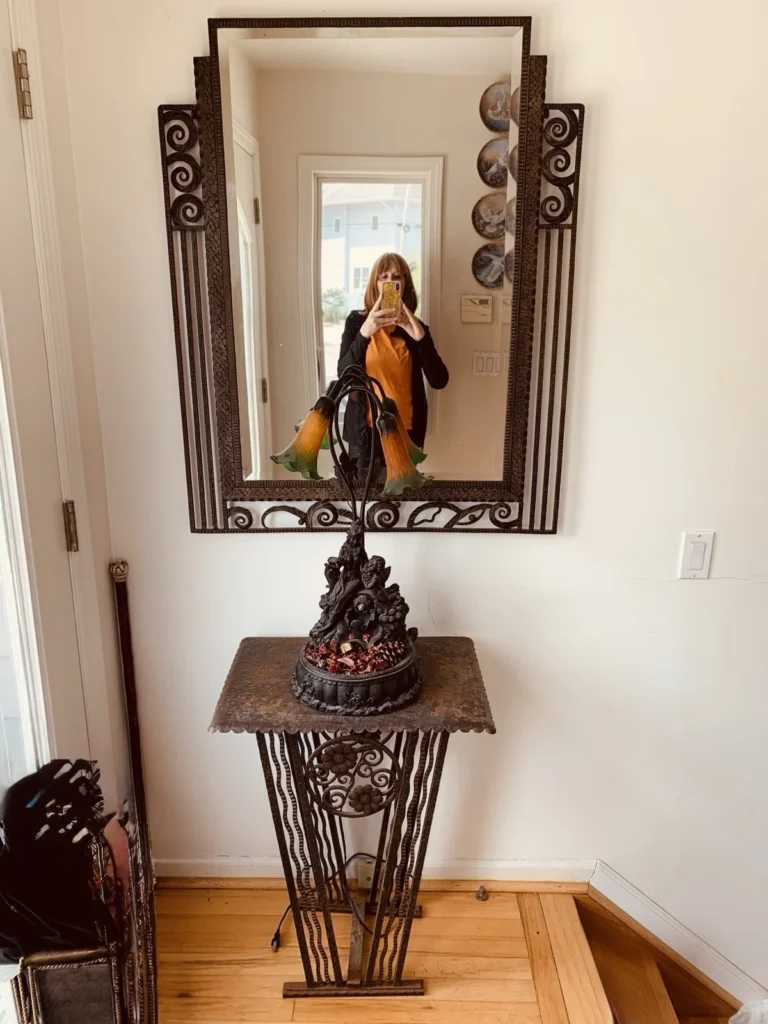
Art Deco mirrors reflect the geometric style and glamour of the 1920s and 1930s. Their frames often feature stepped shapes, mirrored panels, or chrome accents. Some designs include sunbursts or chevron patterns that make them instantly recognizable. These mirrors add vintage sophistication to both classic and modern rooms.
Their clean lines bring balance to bold interiors with rich colors or glossy finishes. Placed above a console or vanity, an Art Deco mirror becomes the focal point. They pair especially well with marble, glass, and lacquered furniture. Their sleek appearance continues to inspire contemporary mirror designs.
Empire Mirrors
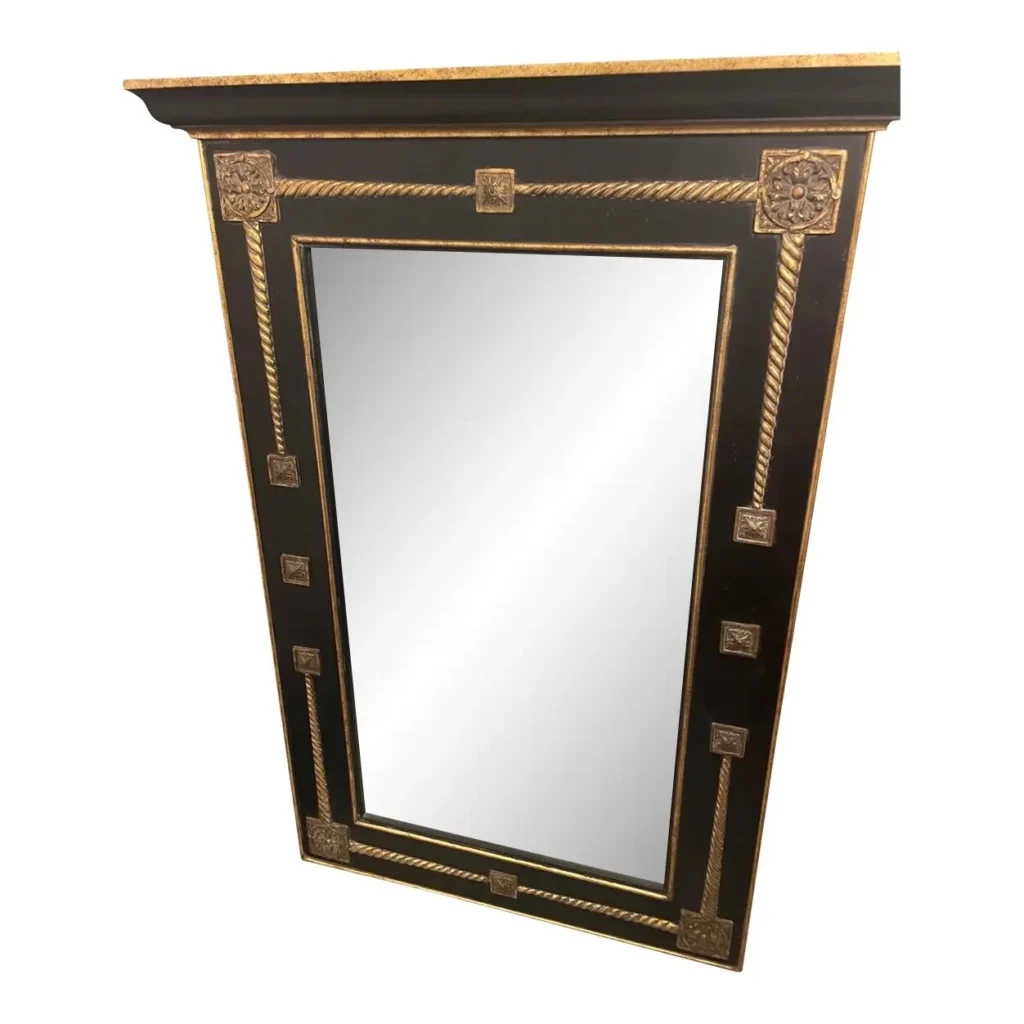
Empire mirrors draw inspiration from the classical motifs of ancient Rome and Greece. Their heavy frames are usually mahogany or walnut with gilded bronze or brass ornamentation. Decorative features like laurel wreaths and eagles symbolize power and prestige. These mirrors have a strong architectural presence that feels majestic.
In a living room or library, an Empire mirror pairs beautifully with rich textiles and antique furniture. The contrast of dark wood and golden accents gives a feeling of strength and refinement. Collectors admire them for their craftsmanship and history. They add a stately sense of balance to traditional spaces.
Louis Philippe Mirrors
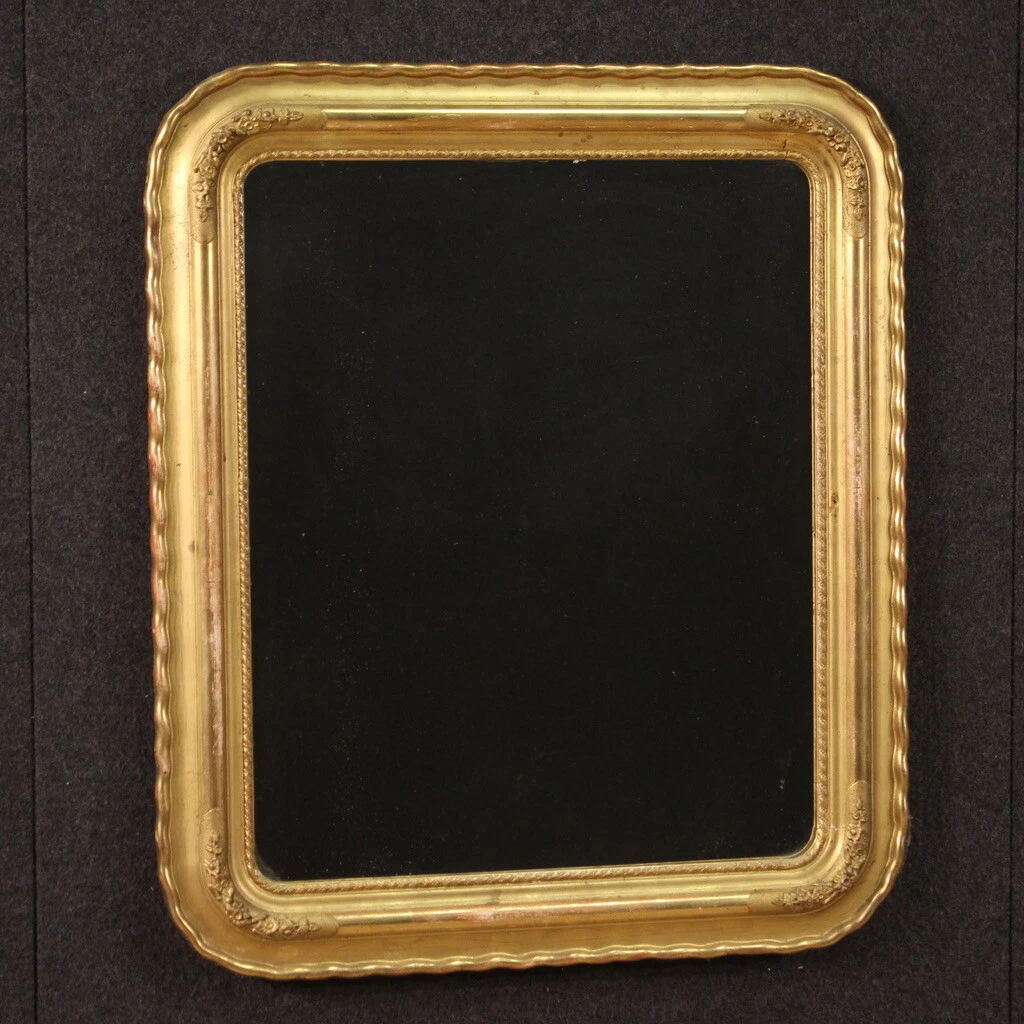
Louis Philippe mirrors from 19th-century France are simple yet elegant. They feature rounded tops, flat bases, and minimal ornamentation. The frames, often gilded or silvered, were designed to complement rather than compete with other furnishings. Their understated charm makes them versatile for many interiors.
These mirrors work beautifully in bedrooms, dining rooms, or entryways. Their gentle curves soften angular furniture and modern spaces alike. A large Louis Philippe mirror reflects light while keeping the room feeling calm. Collectors value them for their timeless design and subtle sophistication.
Chippendale Mirrors
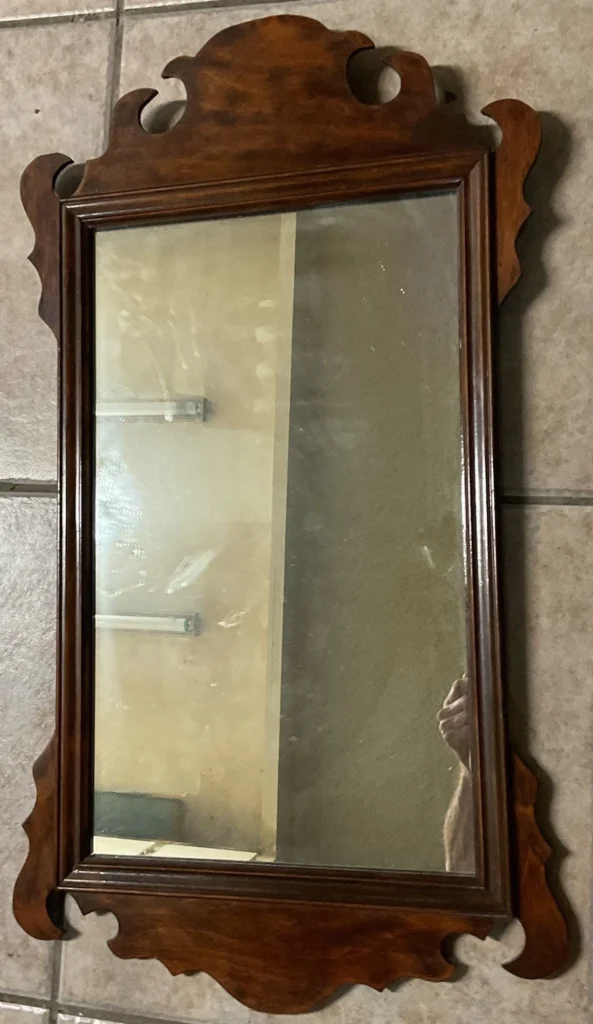
Chippendale mirrors are English classics known for their elaborate fretwork and rococo flair. They often feature giltwood frames with carved leaves, scrolls, and sometimes chinoiserie details. The intricate carving highlights the skill of 18th-century artisans. Their dramatic shapes make them stand out as statement pieces.
They add character to traditional or eclectic interiors, especially above mantels or sideboards. The gold or dark wood frames catch light beautifully, giving depth to the wall behind. Many reproductions still follow Chippendale’s original patterns. Their artistry continues to define fine English style.
Gothic Revival Mirrors
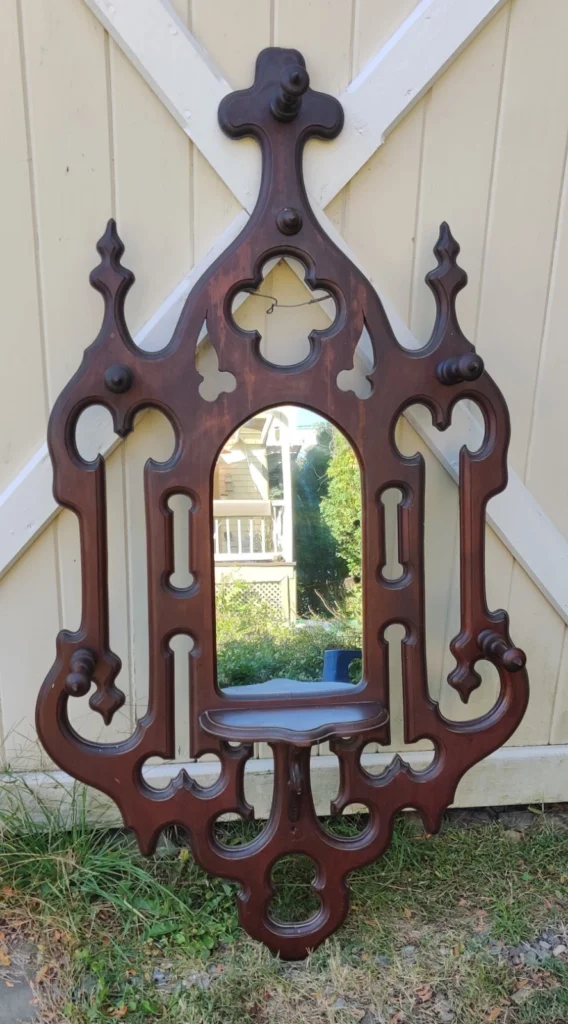
Gothic Revival mirrors echo the pointed arches and tracery of medieval architecture. Their frames often include carved finials and motifs inspired by cathedrals. These mirrors became popular in Victorian homes that favored historic design. Their tall, narrow forms bring a touch of drama to modern spaces.
They are best suited for hallways, libraries, or studies where their architectural style can shine. The detailed woodwork adds texture and history to plain walls. When paired with candlelight or stained glass, their reflection becomes almost church-like. Each piece evokes mystery and old-world romance.
Overmantel Mirrors

Overmantel mirrors were designed to sit above fireplaces and reflect both light and warmth. Their wide, horizontal frames often feature carvings, moldings, or gilt trim. These mirrors help open up small rooms by reflecting the space. They remain one of the most classic mirror forms in traditional homes.
In a living room or parlor, an overmantel mirror anchors the entire wall. It draws attention to the fireplace while brightening the area. Many antique examples show signs of gentle wear that add charm and authenticity. A well-placed overmantel mirror creates both comfort and elegance.
This article originally appeared on Avocadu.
